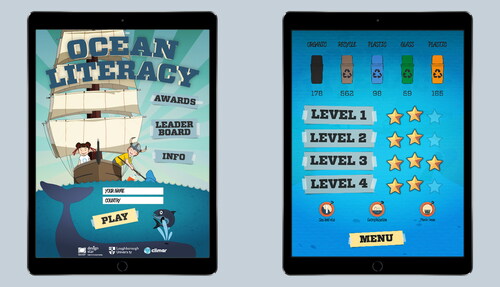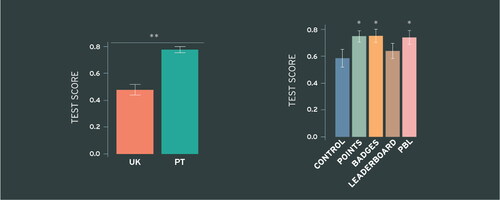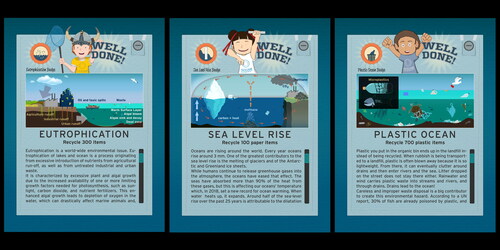Figures & data
Table 1. Session planning.
Table 2. Ocean literacy answers obtained for Points as a game element. Over 80% of correct answers are in bold font, and less than 20% are in red.
Figure 1. Ocean Literacy application (Leitão, Maguire, and Turner Citation2019a).

Table 3. Ocean literacy answers obtained for Badges as a game element. Legend as in .
Table 4. Ocean literacy answers for Leaderboard. Legend as in .
Table 5. Ocean literacy answers for the PBL triad. Legend as in .
Table 6. Ocean literacy answers given after the oral explanations. Legend as in .
Figure 3. Scores obtained by the 98 pupils in the assessment questionnaire passed after the five testing sessions. Scores are presented according to the results of the model I factorial ANOVA carried out to investigated possible knowledge differences elicited by the game elements, i.e. by significant main factor: country (left) and test session (right). For the test session, the classical teaching session was taken as the control category against which the scores in each game element category (Points, Badges, Leaderboard and the PBL triad) were compared. ** indicates significant differences at p < 0.001; * indicates significant differences at p < 0.05 relative to the control, according to the results of the post-hoc Dunnett test.

Table 7. Results of the model I factorial (orthogonal) ANOVA carried out to investigate differences in the pupils’ learning scores obtained in the knowledge test (dependent variable) elicited by the various game elements tested in relation to the country of origin.

